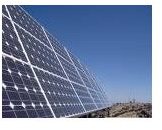New Solar Tech: Advancements in Solar Technology
The Promise of Solar
Solar power remains an important component in the effort to produce clean energy while achieving independence from foreign oil. Even small savings when adopted on a global scale can make a sizable impact. Innovative products and advances in new solar tech are progressing at a rapid pace, providing increasingly cost effective energy saving solutions.
Innovative Solar Products
As solar becomes mainstream, production costs decline and technology innovations find their way into a variety of new products. These devices provide convenience while helping to reduce energy consumption and the user’s carbon footprint.
Solar Chargers: Solar chargers for laptop and notebook computers eliminate the fear of losing data when the battery is drained and there isn’t an available power receptacle. Solar chargers can charge 95% of the portable digital products currently available. This includes not only laptop computers, but digital cameras, mobile phones, MP3 players, DVD players and portable video games. This is a perfect accessory for those traveling to remote areas where power is unavailable or in a vehicle with limited access to outlets.
Solar Cooling Hats: This popular headwear accessory has a small fan built into the front of a conventional hat. A solar cell is attached to the crown which collects the sun’s energy and powers the fan while directing a cool breeze over the face. Fan speed is increased by the intensity of the sun and the unit has an on/off switch. There are numerous available styles such as safari and traditional ball caps that are available in many colors. Some even include favorite team logos.
Small Solar Cells: Sandia National Laboratories has developed tiny crystalline-silicon photovoltaic cells that measure a mere 20 microns in thickness and ¼ to 1 millimeter across. These cells produce the same amount of electricity as standard cells but use 100 times less silicon in production. Current efficiency levels are 14.9%.
The small size and flexibility of the cells creates an infinite variety of applications. Solar panels can be easily integrated into fabrics and will flex with the movement of the material. Attaching solar panels to clothing creates a mobile energy source to power fans, phones, laptops and other hand held devices. Larger panels can be attached to tents and other structures to provide lighting and electricity for the domain without the need to haul a generator around.
Solar Powered Grass: As a novelty item, solar powered wild grass plants provide an eerie nocturnal glow to a back yard. Pushing the stakes into the ground allows the solar cells to absorb the sun’s energy that is released when the sun goes down and the green glow begins.
New Solar Technologies
XsunX is a developer of thin film technology that has the potential to substantially reduce the production cost of solar panels. XsunX focuses on the copper indium gallium diselenide (CIGS) technology that offers a low cost alternative to silicon solar cells currently used in 80% of solar panel construction. CIGS offers lower per watt production costs through solar cell processing that significantly reduces manufacturing defects in cell structure.
The Pilkington group is developing a process of coating commercial glass panes with spray on organic photovoltaics. The objective is to produce an acceptable level of transparency while achieving 4% efficiency. When applied to the glass in a commercial building, the structure can generate 20-30% of its own energy needs.
Solar innovation is being used to bring potable water to arid environments. A solar powered desalination plant is being constructed in Al Khafji City in Saudi Arabia. In conjunction with Saudi Arabia’s national research and development organization, IBM has technology that could substantially reduce the cost of removing salt from sea water.
The process uses leading edge membrane technology that is powered through an ultra high photovoltaic concentrator. UHCPV technology allows a CPV system to operate at three times the efficiency of the best concentrating panels currently available. Energy use will be reduced by almost 50% when compared to existing reverse osmosis methods. Additionally, solar technology allows plants to be constructed in remote areas without the requirement of grid access.
The Promise of Solar
Continued advancements in new solar tech promise to provide improvements in functionality, size and usefulness in future devices. It is clear that solar will play an increasingly prominent role in providing innovative products powered by clean, renewable energy.
Image credit: commons.wikipedia.com
